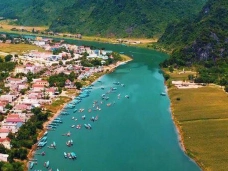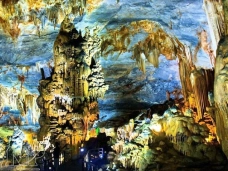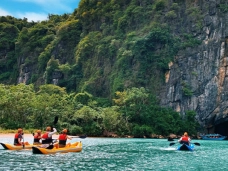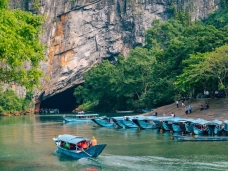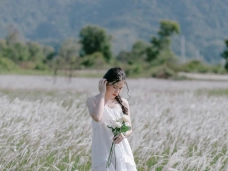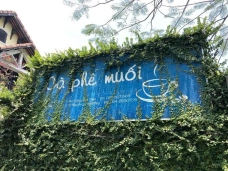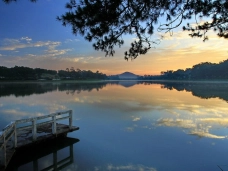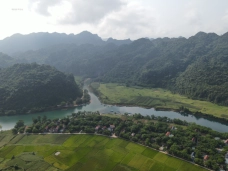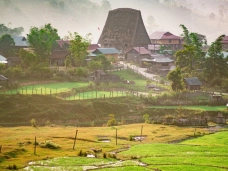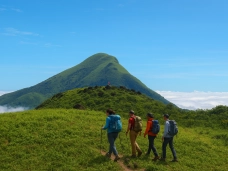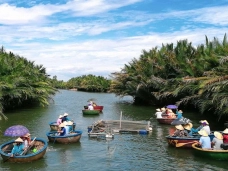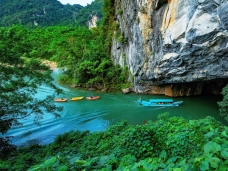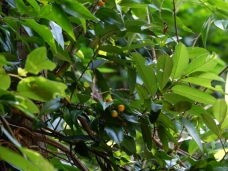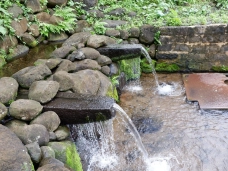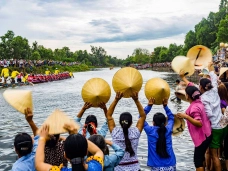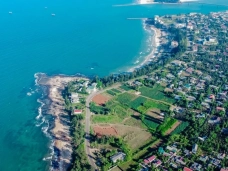A Day of Forest Bathing in Rú Lịnh
10-04-2025 15:12
I’d heard about Rú Lịnh long before I ever set foot there. It’s a patch of untouched forest in Vĩnh Linh District, Quảng Trị Province, near the famous Vịnh Mốc Tunnels—an underground complex built during the American War by local villagers. This time, I had the chance to finally visit, and I met Ms. Giang—someone who loves Rú Lịnh deeply. She once stood in university lecture halls but chose to return to this forest and live with it.
I came in the 10th lunar month, which locals call the mushroom season. Giang wandered off for a short while and returned with a handful of nấm mối—termite mushrooms—along with some wild greens. Just like that, we had a dish with an earthy, rich flavor. Nấm mối truly is the king of mushrooms.
Rú Lịnh is set in Vĩnh Linh, Quảng Trị, right at a point of natural convergence—where the Trường Sơn Mountains slope toward the sea, where red basalt soil meets soft alluvial sands, and where the dry, harsh gió Lào winds alternate with damp rains from the East Sea. The rolling hills are ideal for crops like rubber, coffee, and pepper, while the coastal plains support rice paddies and seasonal vegetables.
 Harvesting termite mushrooms. Photo by Tuệ Minh.
Harvesting termite mushrooms. Photo by Tuệ Minh.
Rú Lịnh nằm ở Vĩnh Linh, Quảng Trị là vùng đất giao thoa – nơi rừng núi Trường Sơn đổ dốc về phía biển, nơi đất đỏ bazan gặp phù sa cát mịn, nơi gió Lào khô rát xen kẽ những trận mưa dầm từ biển Đông. Trải rộng trên các đồi núi, phù hợp để giữ chân các loại cây công nghiệp như cao su, cà phê, hồ tiêu. Trong khi đó, vùng cát pha và đất phù sa ven biển lại cho phép canh tác lúa, hoa màu, cây ngắn ngày.
A Forest in the Middle of the Plains
It’s hard to believe that right in the middle of flat, red earth lies a 100-hectare forest, home to towering lim, gụ lau, and sến trees. I stood at the base of one ancient tree, looked up, and couldn’t see its crown. Its bark was rough and covered in moss, its trunk so wide you couldn’t wrap your arms around it.
Locals say that during the war, this place was a “green treasure chest”—a refuge that shielded and sustained people under fire. Today, it still serves quietly: regulating the climate, holding water, and sheltering dozens of rare plant and animal species.
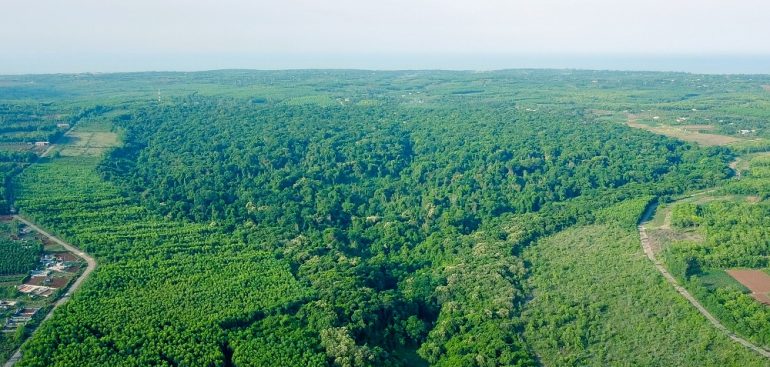 Vegetation Cover in Ru Linh Forest
Vegetation Cover in Ru Linh Forest
Rú Lịnh – A Living Natural Museum
Although surrounded by plains, Rú Lịnh boasts a surprisingly diverse ecosystem. You’ll find precious hardwood trees like lim xanh, gụ lau, trầm dó, and trám. Some of these ancient giants are impossible to hug in one go.
More than 70 animal species inhabit the forest—from birds and small mammals to reptiles—making this a living, breathing, balanced ecosystem.
What made this forest walk even more memorable was learning about Lasianthus trongii—a newly discovered plant species as of early 2025. Small and unassuming, its white flowers and orange-red berries are easy to miss, but they speak volumes about the magic of Rú Lịnh. The plant was named after Nguyễn Đình Trọng, a man who spent over 40 years protecting the forest. Known simply as “Mr. Trọng the Forest Keeper,” he’s living proof of how deeply humans and nature can be connected.
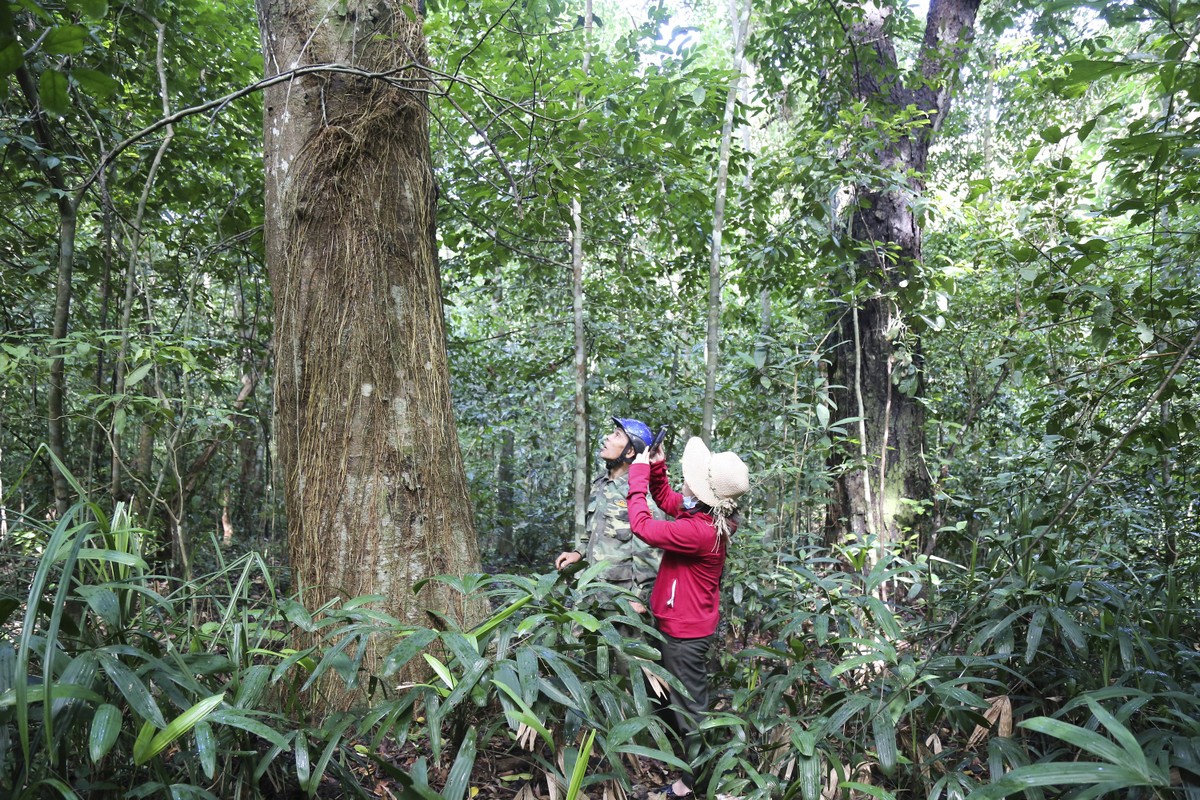
Ancient tree in Rú Lịnh. Source: Quảng Trị Newspaper
Listening to Nature
I didn’t venture too deep—just strolled along a shaded trail under the canopy. Even so, the forest spoke in its own language: the chirping of red-whiskered bulbuls, squirrels leaping from branch to branch, and the soft crunch of dry leaves underfoot.
No hiking boots or survival skills needed. Just slow down, stay open, and the forest will start speaking to you in its own quiet way.
Rú Lịnh Doesn’t Shout
You won’t find organized tours, billboards, or pre-pitched campsites here. That’s exactly what makes Rú Lịnh special. It’s a place for those who genuinely want to reconnect with nature. A place to leave the city behind and hear the forest tell its stories.
For me, a single morning in Rú Lịnh was enough to feel lighter. Not because anything dramatic happened, but simply because walking out of the forest, I felt grateful—to the one who’s kept it safe, and to the forest itself, for holding onto a piece of wildness for all of us.

Closed-canopy vegetation
How Do We Keep Rú Lịnh Intact?
Rú Lịnh doesn’t need crowds. It needs people who understand that forests aren’t check-in spots—they’re places to tread lightly, listen, and respect.
Its true value lies in its untouched state—an ancient forest in the heart of the plains, an ecosystem still whole. Everyone who visits, even once, can help by doing the smallest things: don’t litter, don’t disturb, don’t make it loud.
“Forests don’t have fences, but if we don’t protect them, soon there’ll be nothing left to protect.” And it’s true. Keeping the forest alive means preserving not just the trees and birds—but a part of ourselves. A part that still remembers how to belong to nature.
Tuệ Minh
Comments
Comments (Total 0)
Related Articles
13-12-2025
Giải mã tên gọi Phong Nha – Kẻ Bàng
26-11-2025
Khe Sanh – A Journey into Memory
05-11-2025
8 Unmissable Instagram Spots in Da Lat
28-10-2025





